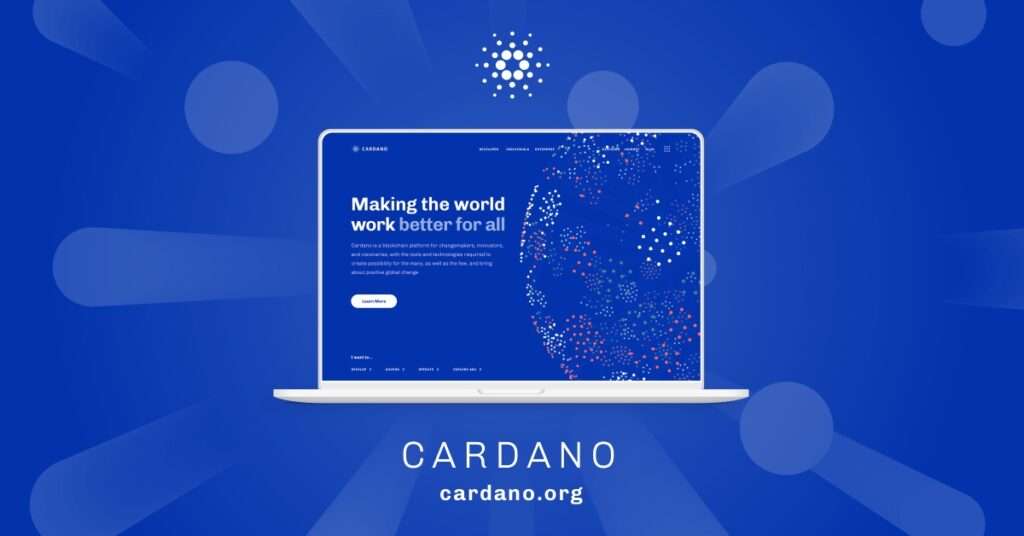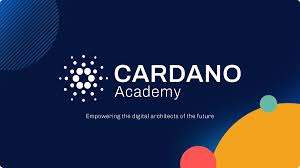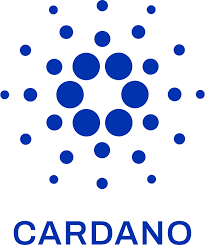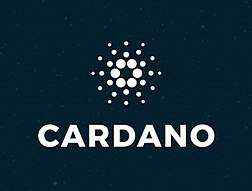Latest News
- Cardano Price Eyes Massive Pump In May Following Cyclical Pattern From 2024
- Cardano (ADA) Price Still Poised for $8, So Why Do Traders See Rexas Finance (RXS) As The Better Buy?
- Rollblock Price Prediction: Can RBLK Soar From $0.062 To $1 In 2025? Solana and Cardano Holders Think So
- Dogecoin And Cardano Investors Buy Into New Viral Presale Called Remittix. Why Altcoin Could Rise 20x In April Alone
Welcome to our Cardano review.
When you look into Cardano (ADA), you’ll find a blockchain platform that stands out for its unique approach to scalability, security, and sustainability.
Launched in 2017, it utilizes a two-layer architecture and the Ouroboros proof-of-stake algorithm to enhance performance.
Cardano’s commitment to peer-reviewed research and formal verification sets it apart in the ever-evolving blockchain landscape.
As you explore its ADA token’s role in staking and smart contracts, you’ll notice how its strategic partnerships and continuous upgrades hint at significant future potential.
So, what does this mean for its position in decentralized finance? Let’s find out in this review…
Quick Overview
- Cardano’s unique two-layer design separates transaction processing from smart contract execution, enhancing performance and security.
- The Ouroboros PoS consensus algorithm increases energy efficiency and mitigates risks like 51% attacks.
- Cardano’s ADA token has a capped supply of 45 billion, with staking incentives and low transaction fees boosting its utility.
- Extensive partnerships, including with the Ethiopian government, demonstrate Cardano’s potential for real-world blockchain applications.
- Continuous upgrades like the Alonzo hard fork are expanding Cardano’s capabilities in decentralized finance and smart contracts.
Here’s an excellent overview of Cardano to quickly help you understand more about this blockchain and how to get started:
History and Background
Cardano (ADA) launched in 2017, aims to offer a more balanced and sustainable ecosystem for cryptocurrencies. When you examine its history, you’ll see that Cardano was developed by IOHK, led by Charles Hoskinson, a co-founder of Ethereum. This background brings a layer of credibility, as Hoskinson’s experience in the crypto industry is extensive.
From a technical analysis perspective, Cardano’s initial price movements showed volatility common to new cryptocurrencies. ADA’s price surged in late 2017 but faced a sharp correction in 2018, reflecting broader market trends. Understanding these early patterns helps you gauge its potential for future volatility.
Market trends indicate that Cardano’s focus on academic research and peer-reviewed development has garnered attention. This strategic approach may reduce risks associated with hasty or unvetted updates, providing a more stable investment environment.
However, it’s vital to monitor ongoing market sentiment and technological advancements to assess ADA’s long-term viability.
From a risk assessment standpoint, Cardano’s methodical development process can be a double-edged sword. While it may reduce the risk of bugs and technical debt, the slower pace of updates could make it less competitive.
Evaluating these factors will help you make informed decisions regarding ADA’s potential in your portfolio.

Technology and Architecture
When evaluating the technology and architecture of ADA, you’ll notice its unique two-layer design. This separation into the Cardano Settlement Layer (CSL) and the Cardano Computation Layer (CCL) enhances flexibility and security.
The CSL handles ADA transactions, ensuring fast and secure transfers, while the CCL manages smart contracts and decentralized applications (dApps). By isolating these functions, Cardano minimizes risk and enhances scalability.
Cardano employs the Ouroboros proof-of-stake (PoS) consensus algorithm, a key differentiator from proof-of-work (PoW) systems like Bitcoin. Ouroboros is more energy-efficient, reducing the environmental footprint and operational costs. It also offers a high level of security, backed by rigorous academic research and peer-reviewed protocols.
Market trends indicate a growing interest in PoS systems, as investors and developers seek sustainable and scalable blockchain solutions. Cardano’s architecture positions it well within this trend, appealing to environmentally conscious stakeholders.
In terms of risk, while Cardano’s layered approach and PoS algorithm present numerous advantages, they also introduce complexity. This complexity could pose integration challenges and steep learning curves for developers.
However, Cardano’s active community and thorough documentation mitigate these risks, supporting ongoing innovation and adoption.
Performance and Scalability
Regarding performance and scalability, it’s vital to highlight how Cardano’s unique architecture contributes to its efficiency. Cardano employs a layered architecture, separating the settlement and computation layers. This design enhances transaction processing speed and allows for more complex functionalities without compromising performance.
The Ouroboros proof-of-stake protocol further boosts scalability by enabling secure and efficient consensus mechanisms.
In terms of market trends, Cardano’s scalability potential is a key factor driving investor interest. The network’s ability to handle a high transaction throughput positions it well against competitors like Ethereum, especially as decentralized applications (dApps) and smart contracts gain traction.
Hydra, a layer-2 scaling solution, promises to greatly increase transaction rates, theoretically achieving millions of transactions per second.
From a risk assessment perspective, Cardano’s approach to scalability reduces congestion and high fees, common issues in blockchain networks. However, it’s important to monitor how these features are implemented and adopted over time.
The network’s performance is still contingent on continuous upgrades and real-world usage statistics. Any delays or shortcomings in these developments could impact its market position and user confidence.

Security Features
Security remains a cornerstone of any blockchain network, and Cardano implements robust measures to guarantee the integrity and safety of its ecosystem. One of the standout features is its Ouroboros proof-of-stake protocol. Unlike proof-of-work, Ouroboros is energy-efficient and enhances security through random leader selection and epoch-based slot leaders. This method mitigates risks associated with centralization and 51% attacks.
Cardano also incorporates a layered architecture, separating the settlement and computation layers. This design allows for modular updates and minimizes the potential attack surface, ensuring that vulnerabilities in one layer don’t compromise the entire network.
Moreover, Cardano emphasizes formal verification and peer-reviewed research. Every protocol and change undergoes rigorous academic scrutiny before implementation. This process greatly reduces the risk of security flaws, as peer-reviewed methods are typically more robust and reliable.
Another critical feature is the use of hardware wallets and multi-signature transactions. These tools provide an additional layer of security, making it harder for malicious actors to compromise user accounts and transactions.
In the ever-evolving blockchain landscape, Cardano’s extensive security measures position it as a resilient and trustworthy platform for investors and developers alike.
ADA Token
When evaluating the ADA token, you should consider its tokenomics, which influence supply and demand dynamics.
Assess the various use cases, from staking to smart contracts, to understand its market potential.
Additionally, knowing where to buy ADA, including major exchanges and platforms, helps you navigate entry points effectively.

ADA Tokenomics
The ADA tokenomics structure is designed to guarantee a balanced and sustainable ecosystem for Cardano. You’ll find that its total supply is capped at 45 billion ADA, with a strategic distribution plan in place. Initially, around 57.6% of ADA was allocated through public sales, while the remaining tokens were reserved for the Cardano Foundation, IOHK, and Emurgo to foster development and adoption.
In terms of market trends, ADA’s deflationary nature sets it apart. Unlike inflationary tokens, ADA’s fixed supply can potentially drive up value as demand increases. This scarcity model can attract long-term investors looking for value appreciation.
However, you should also consider the staking mechanism which plays a critical role in ADA’s ecosystem. Staking not only secures the network but also offers rewards, incentivizing user participation and enhancing liquidity.
When evaluating risks, note that ADA’s value can be volatile, influenced by market sentiment and broader crypto trends. Regulatory developments and technological upgrades can also impact its price.
While Cardano’s roadmap and rigorous peer-reviewed approach offer strong fundamentals, always weigh these factors against inherent market uncertainties. Diversification and continuous monitoring are key to managing investment risks effectively.
ADA Use Cases
Understanding ADA’s tokenomics gives valuable insights into its potential for value appreciation and network stability.
ADA’s primary use cases revolve around staking, transactions, and smart contracts. As a staker, you can participate in the network’s proof-of-stake consensus mechanism, earning rewards while enhancing security. This staking model not only stabilizes the network but also provides a passive income stream, making it attractive for long-term holders.
Transaction fees on the Cardano network are relatively low, facilitating its use in various financial applications. As decentralized finance (DeFi) continues to grow, ADA’s low fees and high throughput position it well for adoption in peer-to-peer lending, decentralized exchanges, and other financial services. These use cases can drive demand, positively affecting ADA’s price.
Smart contracts on Cardano, powered by its Plutus platform, enable the creation of decentralized applications (dApps). This opens up opportunities in sectors like supply chain management, healthcare, and gaming.
Examining market trends, the increasing interest in blockchain solutions for real-world problems suggests a growing demand for ADA.
However, evaluating risk, the regulatory landscape and competition from other blockchain platforms like Ethereum and Solana could impact ADA’s adoption and value.
Where To Buy ADA
Finding reliable platforms for purchasing ADA is vital for both new and seasoned investors. To make informed decisions, consider exchanges with high liquidity and strong security measures.
Binance, for instance, stands out with its robust trading volume, ensuring minimal slippage in volatile markets. Coinbase, known for its user-friendly interface, offers an added layer of regulatory compliance, making it a safe bet for those wary of potential risks.
Market trends indicate a growing number of decentralized exchanges (DEXs) like Uniswap and SundaeSwap are also gaining traction. These platforms allow you to maintain custody of your tokens, reducing counterparty risks.
However, DEXs often come with higher transaction fees, especially during network congestion.
Risk assessment is significant in choosing where to buy ADA. Centralized exchanges (CEXs) like Kraken and Bitfinex offer advanced trading tools and insurance funds, mitigating potential losses from hacks.
On the other hand, DEXs provide greater privacy but lack such safety nets.
Cardano Ecosystem & Partnerships
As you explore the Cardano ecosystem, you’ll quickly notice its robust framework designed to foster scalability, interoperability, and sustainability within the blockchain space.
Cardano’s multi-layer architecture separates the ledger of account values from the computational layer, enhancing security and scalability. This layered approach is essential for supporting complex smart contracts and decentralized applications efficiently.
Analyzing market trends, you’ll observe Cardano’s strategic partnerships playing an important role in its ecosystem’s growth. Collaborations with organizations like IOHK (Input Output Hong Kong), Emurgo, and the Cardano Foundation provide a strong foundation for continuous development and adoption.
Partnerships with companies such as New Balance for product authentication and the Ethiopian government for blockchain-based educational credentials highlight Cardano’s practical applications.
Risk assessment indicates that while Cardano’s partnerships and ecosystem are promising, the platform’s success hinges on real-world adoption and continuous technological advancements.
The ongoing development of the Alonzo upgrade, which introduces smart contract functionality, is a significant milestone. However, competition from other blockchain platforms such as Ethereum and Polkadot poses substantial challenges.
Layer 1 Blockchain Comparison
Our expert team here at Trade Wise has researched and created a comparison table of the most popular layer 1 blockchains including all of the most important data on each chain, including; theoretical transactions per second, average transaction fee, time to finality and much more.
We collected this data in June 2024 so it may change over time (especially gas fees, and Solana’s theoretical TPS will increase significantly with the Firedancer upgrade for example).
This table contains all the data you need to make an informed comparison of how the most popular layer 1 blockchains perform and the strengths and weaknesses of each.
Blockchain Performance Comparison (June 12, 2024)
| Ethereum | Cardano | Solana | Avalanche | Algorand | Internet Computer | |
|---|---|---|---|---|---|---|
| Theoretical TPS | 119 | 386 | 65,000 | n/a (4,500 TPS was claimed previously) | 6,000 | 11,500 |
| Live TPS | 14 | 1.96 | 2,100 (including vote TXs) 980 (excluding vote TXs) | 3.5 (C-Chain only) 15.5 (including subnets) | 28.9 | ~6,000 |
| Average Transaction Fee | $8.57 | $0.17 | $0.02 | $0.27 | $0.0008 | $0.0012 (ICP transfers) |
| Transaction Finality | ~15 minutes | 12 hours (absolute certainty) Between 2 min and 25 min (practical purposes) | ~12 seconds | ~1 second | Instant (~3 second block time) | ~2 seconds (NNS transactions) |
| Node Count | 6,592 | 3,088 | 4,046 | 1,731 | 1,489 | 559 |
| Energy Consumption | 0.0026 TWh (annualized) | 0.0025 TWh (annualized) | 0.022 TWh (Mar 2022 – Feb 2023) | 0.00046 TWh (annualized) | 0.00070 TWh (annualized) | 0.00074 TWh (annualized) |
Future Prospects
Considering Cardano’s future prospects, the platform’s roadmap reveals a robust trajectory aimed at addressing key industry challenges. You’ll notice the focus on scalability, interoperability, and sustainability.
Cardano’s ongoing upgrades, like the Alonzo hard fork, enable smart contracts, opening the doors for decentralized applications (dApps) and DeFi solutions. This positions Cardano as a formidable competitor to Ethereum, especially with lower transaction fees and energy-efficient proof-of-stake consensus.
In terms of market trends, ADA’s adoption is growing, fueled by institutional interest and increasing use cases. If you track ADA’s price movements, you’ll see a correlation with major updates and partnership announcements. As more developers migrate to Cardano, expect the token’s value to reflect this ecosystem growth.
However, risk assessment is essential. Regulatory scrutiny and market volatility pose significant risks. The crypto market’s inherent unpredictability means ADA could face sudden price swings.
Additionally, Cardano’s success hinges on timely execution of its roadmap. Delays or technical setbacks could dampen investor confidence.
In essence, Cardano’s well-defined strategic roadmap and growing adoption indicate promising future prospects, but you should remain vigilant about potential risks and market dynamics.
Frequently Asked Questions
How Can I Buy Cardano (Ada)?
To buy Cardano (ADA), create an account on a reputable exchange, complete KYC verification, and fund your account. Analyze market trends and assess risks before executing your purchase. Monitor ADA’s price movements and set stop-loss orders.
What Are the Best Wallets for Storing Ada?
For ideal security, use Daedalus for full-node capabilities or Yoroi for a lightweight option. Analyze market trends and risk; hardware wallets like Ledger or Trezor offer robust protection against potential cyber threats. Choose based on your needs.
Can I Stake ADA to Earn Rewards?
Yes, you can stake ADA to earn rewards. Staking ADA involves delegating your tokens to a staking pool, minimizing risk, and maximizing potential returns based on network performance and pool efficiency. It’s a strategic investment move.
Is Cardano (Ada) Environmentally Friendly?
Yes, Cardano is environmentally friendly. Its proof-of-stake consensus mechanism consumes considerably less energy than Bitcoin’s proof-of-work. This reduces its environmental impact, making it a more sustainable choice for investors concerned about ecological effects.
How Does Cardano Compare to Ethereum?
You’ll find that Cardano’s proof-of-stake model offers greater energy efficiency compared to Ethereum’s current proof-of-work system. Market trends indicate growing adoption, but assess potential risks as Ethereum shifts to Ethereum 2.0 and its own proof-of-stake.
Wrapping Up
To summarize, Cardano’s two-layer architecture and Ouroboros proof-of-stake consensus offer a robust, scalable, and secure blockchain solution.
Its emphasis on peer-reviewed research and formal verification minimizes risks, making it attractive for developers.
The ADA token’s role in staking and smart contracts strengthens its position in the DeFi market.
With continuous upgrades and strategic partnerships, Cardano’s future prospects look promising, but always consider market trends and potential risks before investment.
